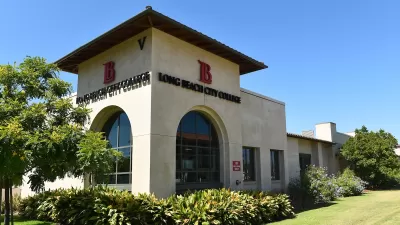Recipients largely spent the monthly $1,000 on basic necessities like housing and food, which mirrors results of similar programs in other U.S. cities.

Business Insider recently reported on the results of the Austin Guaranteed Income Pilot — the first program of its kind in Texas — which gave 135 low-income families $1,000 a month for a year. Participants were allowed to spend the money however they wished, and after the pilot ended last August, they reported spending more than half of it on housing.
A report from the Urban Institute, a Washington D.C. think tank, said participants in Austin’s program “were ‘substantially more housing secure’ than when they enrolled, while other Texas residents with low incomes became ‘modestly less housing secure’ over the same period,” according to the Insider article by Kenneth Niemeyer.
Niemeyer reports that many other cities around the U.S. are also “experimenting with basic-income projects to address rising homelessness and support their most vulnerable residents,” including Baltimore and Denver. Those programs also reported increased housing security for recipients.
Despite these results, guaranteed-income programs remain controversial. Earlier this month, Harris County, Texas, which includes Houston, launched a guaranteed-income program called Uplift Harris that gives low-income residents $500 a month, but State Sen. Paul Bettencourt sent a letter to the state’s attorney general asking him to declare the program unconstitutional, based on a section of the Texas constitution that says the legislature cannot give any county power to grant public money for the aid of an individual.
“The county's attorney told the Houston Chronicle that Bettencourt was ‘more focused on political games and weaponizing government institutions than making life better for the people of Harris County,’” writes Niemeyer.

Planetizen Federal Action Tracker
A weekly monitor of how Trump’s orders and actions are impacting planners and planning in America.

San Francisco's School District Spent $105M To Build Affordable Housing for Teachers — And That's Just the Beginning
SFUSD joins a growing list of school districts using their land holdings to address housing affordability challenges faced by their own employees.

The Tiny, Adorable $7,000 Car Turning Japan Onto EVs
The single seat Mibot charges from a regular plug as quickly as an iPad, and is about half the price of an average EV.

Seattle's Plan for Adopting Driverless Cars
Equity, safety, accessibility and affordability are front of mind as the city prepares for robotaxis and other autonomous vehicles.

As Trump Phases Out FEMA, Is It Time to Flee the Floodplains?
With less federal funding available for disaster relief efforts, the need to relocate at-risk communities is more urgent than ever.

With Protected Lanes, 460% More People Commute by Bike
For those needing more ammo, more data proving what we already knew is here.
Urban Design for Planners 1: Software Tools
This six-course series explores essential urban design concepts using open source software and equips planners with the tools they need to participate fully in the urban design process.
Planning for Universal Design
Learn the tools for implementing Universal Design in planning regulations.
Smith Gee Studio
City of Charlotte
City of Camden Redevelopment Agency
City of Astoria
Transportation Research & Education Center (TREC) at Portland State University
US High Speed Rail Association
City of Camden Redevelopment Agency
Municipality of Princeton (NJ)





























